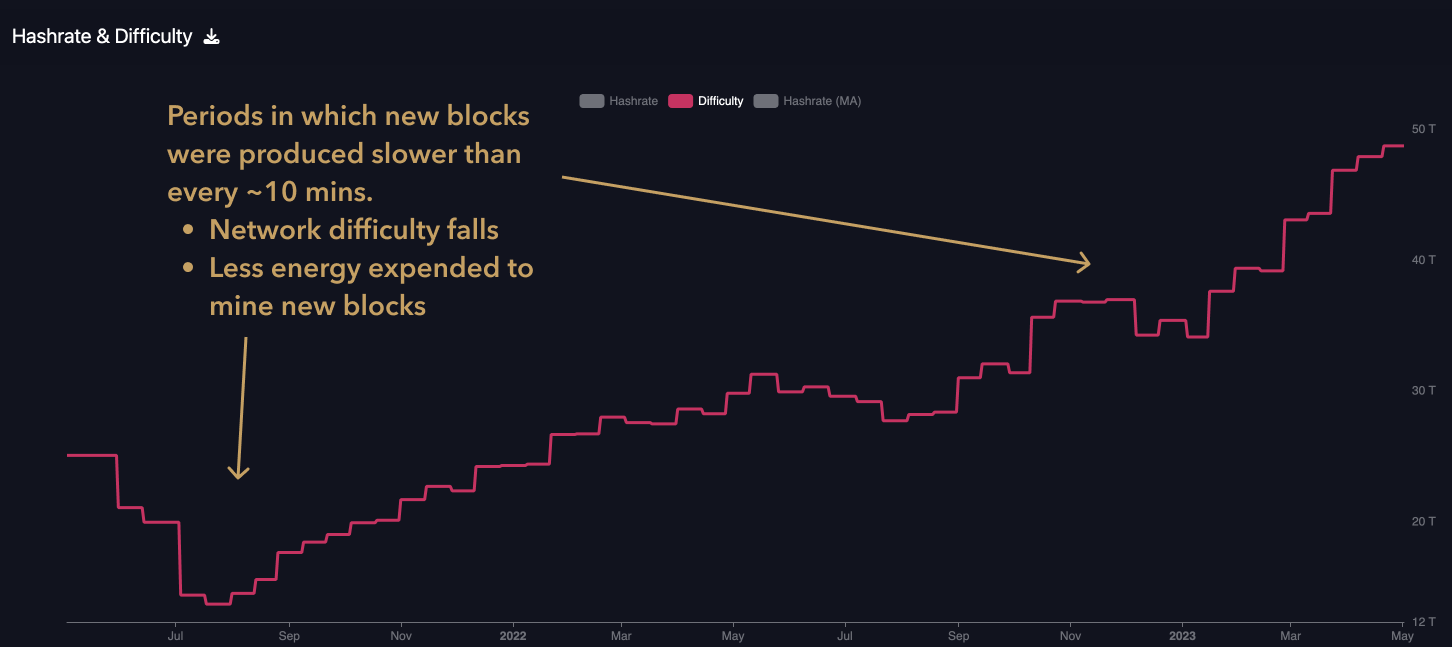Let’s be honest: there are a ton of misconceptions about Bitcoin mining—especially around energy usage.
If there is anything we think non-Bitcoiners should know about Bitcoin mining, it’s that it can actually help the transition to more environmentally friendly energy. Let us explain.
Bitcoin Mining FUD: Separating Signal from Noise 📶
When discussing bitcoin mining, certain talking points indicate that someone may not be as informed as they believe they are.
“Bitcoin miners compete to solve complicated math problems.” False! 🙅
“Bitcoin mining makes everyone’s energy prices go up.” Wrong again! 🙅
“Bitcoin mining uses too much energy and is bad for the environment.” Nope! 🙅
Let’s set the table and briefly describe a misunderstood part of the mining process for some more clarity:
The bitcoin network is designed to produce blocks approximately every 10 minutes. That time is regulated by the mining target value and network difficulty.
The mining target value is a limbo pole that new blocks have to clear in order to be added to the chain. Difficulty is a measure of how hard it will be for miners to get a new block added. The network’s difficulty is automatically adjusted every 2016 blocks (~2 weeks) in a process called difficulty adjustment.
When new blocks are produced faster than ~10 minutes, difficulty increases, which means miners have to use more energy to mine blocks (generally). But does this always happen? Nope.

Bitcoin mining is a dynamic ecosystem that automatically adjusts on a predictable basis to account for individuals voluntarily leaving or joining the network in order to maintain a consistent block issuance of 10 minutes on average.
This mechanism incentivizes miners to run lean operations and to seek out cheap, abundant sources of energy.
Mining Incentivizes Energy Ingenuity 🐮🔬
Bitcoin mining is a fascinating tool that can add revenue streams to a variety of generation technologies, like stranded natural gas wells (which would otherwise be flared), and intermittent generation sources like wind and solar.
Beyond traditional energy sources, bitcoin mining is able to monetize methane produced in the decomposition process of organic matter.
Cointelegraph recently produced an excellent video covering the story of Tom Campbell: an Irish farmer who, with the help of Scilling Digital Mining, is mining bitcoin with energy generated from organic waste materials from his farm 🧑🌾
Bitcoin mining is the mechanism that incentivizes the transformation of would-be waste materials, into a renewable energy resource, and the world’s hardest money.
This means that over time, Bitcoin mining will be additive to the energy sector—adding revenue streams to previously unfeasible operations and driving down costs for consumers.
Intel’s Loss is Block’s Gain 🧑💻
After first publicizing the initiative in February 2022, semiconductor manufacturing giant Intel has recently announced an end to their production of Bitcoin Mining chips.
However, the re-prioritization by Intel has created a buying opportunity for Block—in particular, for their Bitcoin Mining Development Kit “MDK” program.
As it stands right now, “MDK” is working to offer:
- An industrial-grade bitcoin mining hashboard.
- A custom control board, to work alongside the hashboard.
- Open source firmware, a software API, and a web front-end to monitor the operation.
- Reference materials and source documentation to facilitate customization.
Block has said that a major motivation for this project stems from the fact that ASIC manufacturing is relatively centralized, the main players being Bitmain and MicroBT.

Best of Bitcoin Twitter 🐦
- Alliance Bernstein, one of the world’s largest asset management firms, expressed that recent U.S. banking woes show no signs of slowing and that Bitcoin represents an opportunity to defend purchasing power.
Our take: We agree with this assessment; further, these statements indicate that financial institutions are beginning to seriously consider bitcoin’s potential to hedge against financial collapse.
- Balaji Srinivasan has settled his “Bitcoin to $1M in 90 days” bet by making provable on-chain donations. The angel investor went on to give context for his gambit.
Our take: This tracks against what many thought—the bet was intended to drive conversations around the U.S. fiscal debt, worsening banking conditions, deteriorating commercial real estate markets, and more.
- The Kingdom of Bhutan confirms that it has been mining bitcoin for years, utilizing the country’s abundant hydroelectric power supply.
Our take: Sovereign nations with access to cheap power may begin to consider this approach in the future. With Russia purportedly increasing its mining efforts, bitcoin might be used to settle international trade faster than people anticipate.

